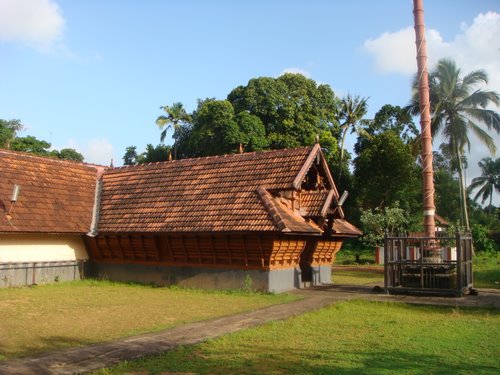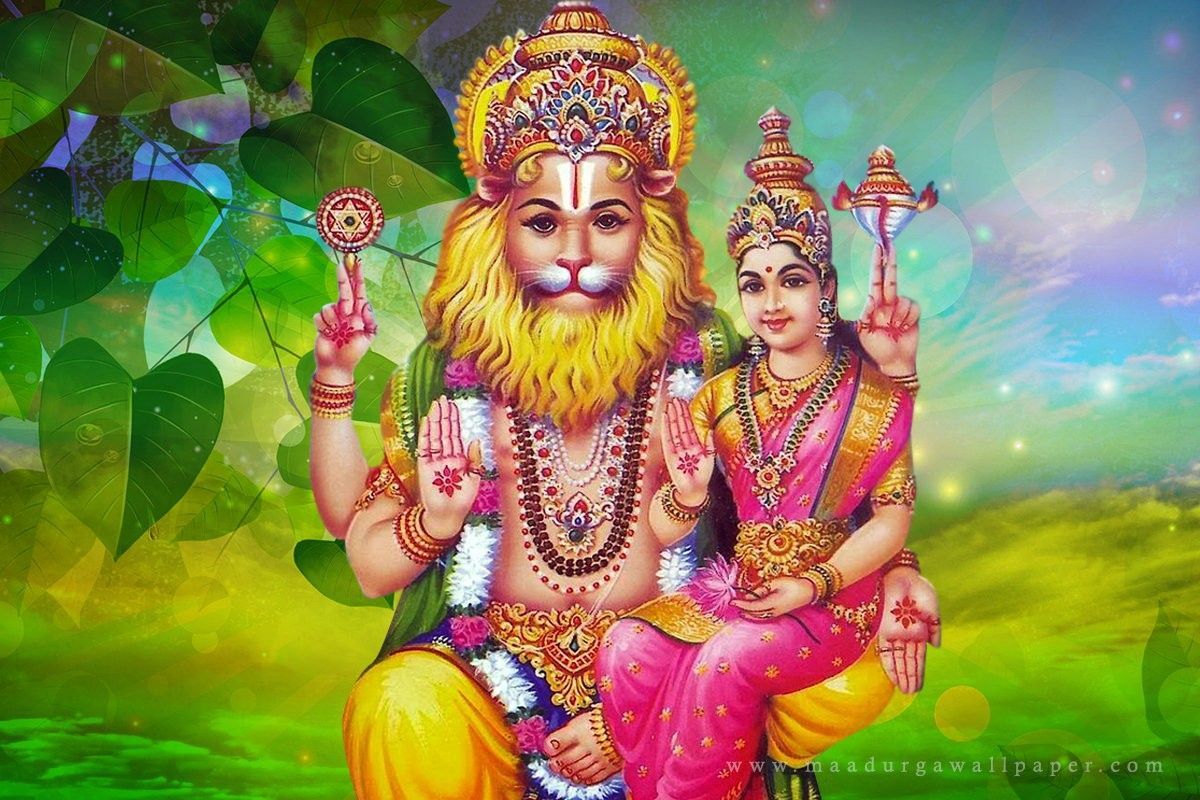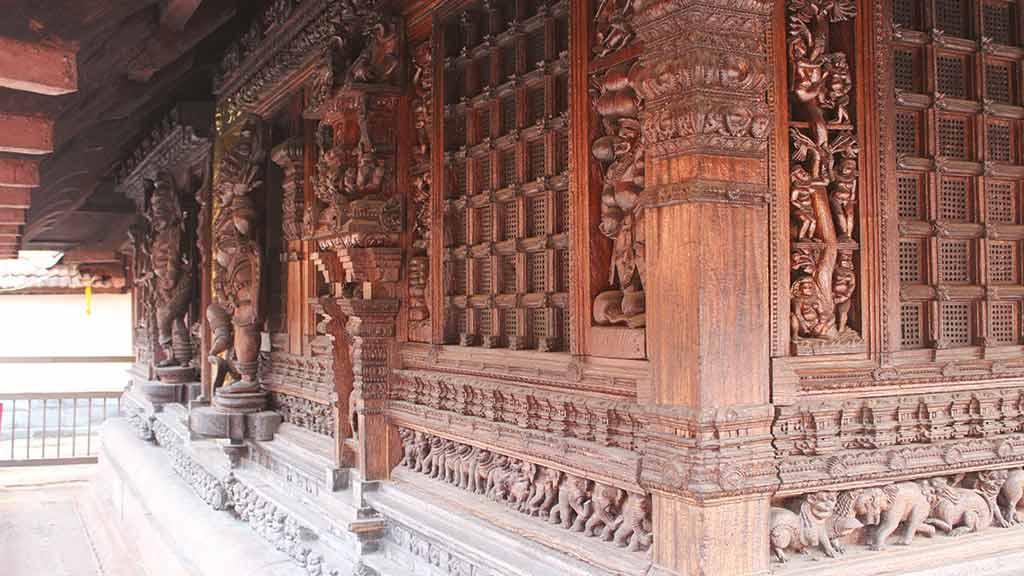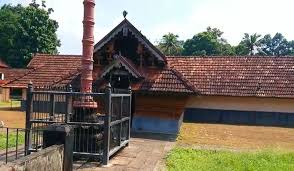Chathankulangara Narasimha Temple is situated approximately 500 meters from Chenganoor Mahadeva Temple. It is believed that the name Sasthamkulangara may have evolved into Chathankulangara, suggesting that the site might have originally been a Sastha temple.

Chathankulangara Narasimha Temple, renowned for its exquisite sculptural artistry, features a chaturasra alpavimana with a Namaskaramandapa at the front. This 14th-century Nirandhara-type shrine, lacking an inner circumambulatory passage, has a manchaka-style Adhishtana (plinth). The sanctum's roof is adorned with copper sheets, while the Namaskaramandapa has a pyramidal tiled roof.
Enclosed by a Nalambalam, the temple complex houses a square-shaped Garbhagriha (sanctum sanctorum) with an octagonal Griva (neck of the dome) and Sikhara (cupola) crowned by a Stupi.
The granite Adhishtana comprises moulded tiers, including Upana, a short Jagathi, Vritha Kumuda, Kantha with Simha-Mala, and Pattika. Above this, the beautifully carved wooden walls depict various puranic scenes. The jali windows, devakoshtas, and animal friezes add to the temple's intricate beauty.
With four functional doors guarded by Dwarapalakas, each entrance features Durga as the Lalata Bimba. Lord Narasimha, the presiding deity, faces west, while the temple also enshrines Sastha, Ganapathy, Nagar, and Rashas in its sub-shrines. The temple's wooden carvings, arranged in horizontal registers, display remarkable craftsmanship. The western wall illustrates mythical narratives such as Krishna Leela, an eight-armed Vishnu carried by Garuda, the tale of Kiratarjuniya, Putana Vadha, Krishna slaying an elephant, Baka, and Kaliya. It also showcases depictions of Shiva, Brahma, Vishnu, Ganesha, Subrahmanya, and Bhagavati.
The devakoshtas feature Narasimha tearing Hiranyakashipu, Narasimha in Yogasana, and other divine representations. The eastern wall’s northern half narrates the Setubandana story, while the southern side features Ganesha. Engraved on the walls are Dashavatara Vishnu (ten incarnations of Maha Vishnu) and Ananthashayana Vishnu, with one devakoshta portraying Krishna vanquishing Dhenukasura.
The southern wall is adorned with sculptures of Shiva-Parvathi, Ganesha, Nataraja, and Shiva’s cosmic dance witnessed by deities like Vishnu, Brahma, Subrahmanya, and Kali, along with Sita in Ashokavana.
The devakoshtas include depictions of Krishna drinking milk from a cow’s udder, Yakshi, Gajantaka Murthy, and Shiva rescuing Markandeya, with the Lalata Bimba featuring Shiva-Parvathi. The northern wall’s wooden carvings display puranic figures such as Krishna playing the flute, celestial beings, and the renowned Vastra Harana.
The temple’s Pranala (stone water spout) is set below the northern entrance, emerging from a Simha’s mouth and supported by a Bhuta figure in a standing posture.
The prastara (entablature) is further embellished with wooden sculptures, and the valabhi showcases intricate scenes from the Samudra Manthana and other puranas.
Currently managed by the Temple Trust, the temple complex bears historical significance. An inscription in Vattezhuthu (ancient Malayalam script) is engraved at the western entrance, dating back to the 14th century.
It records that Devan Sankaran of Melkkadu undertook temple renovations and re-consecration. The inscription also lists monetary donations made by individuals for feeding Brahmins during the two Dvadasi days of each month and on other occasions. Additionally, it details the lands granted to the temple, highlighting its historical and cultural importance.
ചാത്തൻകുളങ്ങര നരസിംഹ ക്ഷേത്രം
ചെങ്ങന്നൂർ മഹാദേവ ക്ഷേത്രത്തിൽ നിന്ന് ഏകദേശം 500 മീറ്റർ അകലെയുള്ള ചാത്തൻകുളങ്ങര നരസിംഹ ക്ഷേത്രം അതിന്റെ വലിയതും നന്നായി കൊത്തിയെടുത്തതുമായ തടി ശില്പങ്ങൾ കൊണ്ടു ശ്രദ്ധേയമാണ്. ഇവിടെ നരസിംഹമൂർത്തിയെ പടിഞ്ഞാറോട്ടാണ് ദർശനം. ക്ഷേത്രം പെരിയൊരു നിർമാണശൈലിയിലാണ് തീർന്നിരിക്കുന്നത്, എന്നാൽ നാലമ്പലത്തിനുള്ളിൽ സ്ത്രീകൾക്ക് പ്രവേശനം അനുവദിച്ചിട്ടില്ല.
ക്ഷേത്രത്തിലെ നരസിംഹമൂർത്തി ലക്ഷ്മിദേവിയോടൊപ്പം പ്രഹ്ലാദനെ അനുഗ്രഹിക്കുന്ന ഭാവത്തിലാണ് പ്രതിഷ്ഠിച്ചിരിക്കുന്നത്. ഈ ക്ഷേത്രം എ.ഡി. 14-ാം നൂറ്റാണ്ടിൽ പണിതതാണെന്ന് കരുതപ്പെടുന്നു, അതിന്റെ ശ്രീകോവിലിന്റെ ചുവരുകൾ ചക്കമരത്തിൽ കൊത്തിയെടുത്ത മനോഹരമായ ശില്പങ്ങൾകൊണ്ടാണ് അലങ്കരിച്ചിരിക്കുന്നത്. ഏകദേശം 1250 വർഷം പഴക്കമുള്ള ഈ ക്ഷേത്രത്തിന്റെ പോസ്റ്റിലുള്ള രേഖ പ്രകാരം 7-8-1128 എന്നതാണ് രേഖപ്പെടുത്തിയ തീയതി.
ചതുരശ്ര ആകൃതിയിലുള്ള അൽപവിമാന നിരന്ധര തരം ശില്പശൈലിയിലാണ് ക്ഷേത്രം നിർമ്മിച്ചിരിക്കുന്നത്, എന്നാൽ ശ്രീകോവിലിന് ചുറ്റും സഞ്ചരിക്കാൻ കഴിയുന്ന വഴി ഉണ്ടായിരിക്കുന്നു. ഗ്രാനൈറ്റ് അധിഷ്ഠാനത്തിന് മുകളിലായി 21 ദേവതാ വിഗ്രഹങ്ങളും പുരാണ രംഗങ്ങളും അടങ്ങിയ ശില്പപ്പാനലുകൾ പണിതിരിക്കുന്നു. ഗജേന്ദ്രമോക്ഷം, ദശാവതാരം, അനന്തശയനം, ശിവപാർവതി, ഹനുമാൻ, സീത, നരസിംഹം എന്നിവയെ പ്രതിനിധീകരിക്കുന്ന ശില്പങ്ങൾ ഏറെ ശ്രദ്ധേയമാണ്.
ക്ഷേത്രത്തിന്റെ ഇരുവശത്തും ദ്വാരപാലകർ നിവാസിക്കുന്നു. ബലിപീഠം ഉൾവശത്തേക്ക് ചേർന്നാണ് നിലകൊള്ളുന്നത്, ധ്വജസ്തംഭം തുറന്ന നിലയിലാണ്. അതിന്റെ വാസ്തുവിദ്യാ പ്രാധാന്യം കണക്കിലെടുത്ത് 1967-ൽ കേരള സർക്കാർ ഈ ക്ഷേത്രത്തെ സംരക്ഷിത സ്മാരകമായി പ്രഖ്യാപിച്ചു.
മുഞ്ചിര സ്വാമിയുടെ തീർത്ഥാടനത്തിന്റെ ഭാഗമായി, അദ്ദേഹം ഇവിടെ ഉപാസന നടത്തിയിരുന്നു എന്ന് വിശ്വസിക്കപ്പെടുന്നു. അവിടുത്തെ പൂജാനുഷ്ഠാനത്തിനായി ഉപയോഗിച്ചിരുന്ന നരസിംഹമൂർത്തിയെ നിലത്തു ഉറപ്പിച്ചതിനാൽ പിന്നീട് അവിടെയായാണ് ക്ഷേത്രം സ്ഥാപിതമായത്. എ.ഡി. 14-ാം നൂറ്റാണ്ടിൽ ക്ഷേത്രം നവീകരിച്ചു പണിതതാണെന്ന് രേഖകളിൽ കാണപ്പെടുന്നു.
ക്ഷേത്ര സ്ഥലം പണിയാൻ കണ്ടത്തു മഠം സംഭാവന നൽകിയതായി രേഖകളിൽ സൂചിപ്പിക്കുന്നു. ഒരു പുരാതന ശാസന പ്രകാരം, മേക്കണ്ടത്തു തേവൻ ചങ്കരൻ ക്ഷേത്രത്തിന് ഭൂമിദാനം ചെയ്തിരുന്നതായി രേഖപ്പെടുത്തിയിട്ടുണ്ട്. മുൻകാലങ്ങളിൽ മുഞ്ചിര മഠം ക്ഷേത്ര സംരക്ഷണം നടത്തിയിരുന്നെങ്കിലും, നിലവിൽ എൻ.എസ്.എസ് കരയോഗം ക്ഷേത്രം നിയന്ത്രിച്ചുകൊണ്ടിരിക്കുന്നു.
Address:
Keezhcherimel,
Chengannur,
Kerala 689121



